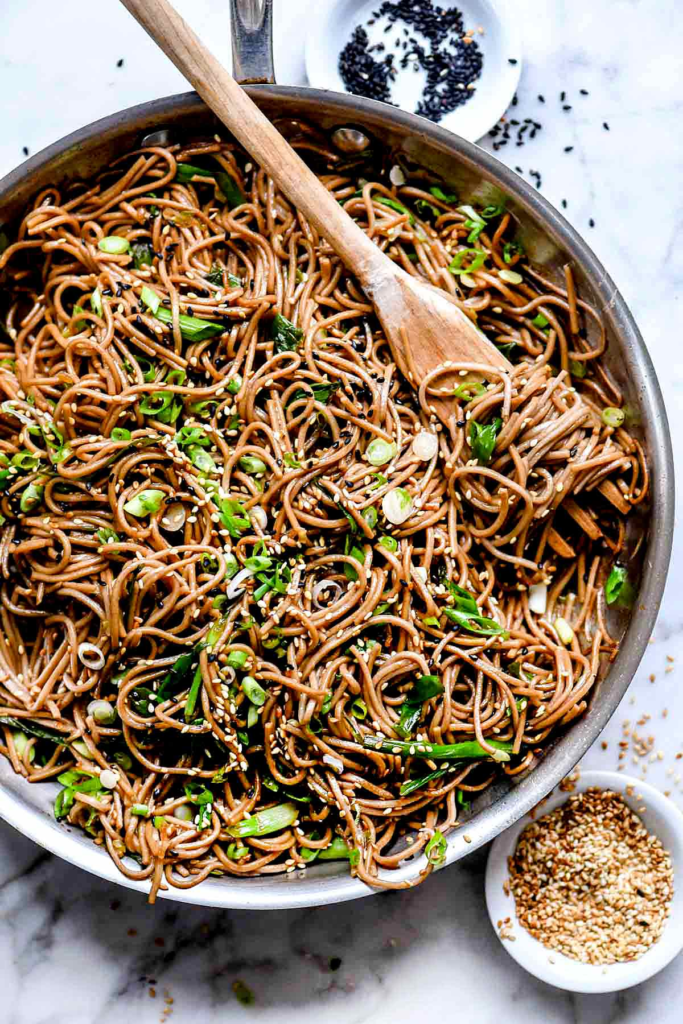The culinary world is in a constant state of evolution, with trends shifting to reflect changing consumer preferences, health consciousness, and cultural influences. In 2024, ingredient-driven trends are taking center stage, with certain key ingredients being celebrated for their unique flavors, textures, and health benefits. Among these, pantry staples like black vinegar, fish sauce, and sesame oil are gaining significant attention. These ingredients not only enhance the taste of simple meals but also connect consumers with global culinary traditions and modern health trends.
Table of Contents
The Rise of Black Vinegar

Black vinegar, particularly aged varieties like Chinese Chinkiang vinegar, has emerged as a favorite among chefs and home cooks alike. Known for its deep, complex flavor profile, which includes notes of caramel and umami, black vinegar is a versatile ingredient that can be used in a variety of dishes. Its rich taste makes it an excellent choice for marinades, dressings, and dipping sauces.
Health Benefits: Black vinegar is not just about flavor; it also boasts several health benefits. It is rich in amino acids and has been associated with improved digestion and metabolism. Some studies suggest that it can help in reducing cholesterol levels and managing blood sugar, making it a valuable addition to a health-conscious diet (The Kitchn).
Culinary Uses: In traditional Chinese cuisine, black vinegar is often used in braised dishes, providing a balancing acidity that enhances the overall flavor. Modern chefs are experimenting with black vinegar in creative ways, using it to add depth to soups, sauces, and even desserts. Its ability to pair well with both sweet and savory dishes makes it a staple for those looking to elevate their culinary creations.
The Umami Power of Fish Sauce

Fish sauce, a fundamental ingredient in Southeast Asian cooking, is known for its intense umami flavor. Made from fermented fish and salt, this potent condiment is a staple in Thai, Vietnamese, and Filipino cuisines. Its ability to add depth and complexity to dishes with just a few drops has made it an indispensable tool in the kitchen.
Health Benefits: Fish sauce is packed with essential nutrients, including amino acids, vitamins, and minerals. It is particularly high in omega-3 fatty acids, which are beneficial for heart health. Additionally, the fermentation process enhances the bioavailability of these nutrients, making them easier for the body to absorb (The Kitchn) (Innova Insights).
Culinary Uses: Traditionally used in dishes like Thai pad see ew and Vietnamese pho, fish sauce is now being incorporated into a wide range of global cuisines. Chefs are using it to enhance the umami flavor in everything from pasta sauces to grilled meats. It’s also a popular ingredient in salad dressings and dipping sauces, providing a savory kick that is both unexpected and delightful.
The Nutty Essence of Sesame Oil

Sesame oil, with its distinct nutty flavor and aroma, is another pantry staple that has gained widespread popularity. Extracted from sesame seeds, this oil is a key ingredient in many Asian cuisines, particularly in Korean, Chinese, and Japanese dishes. Its robust flavor can transform simple ingredients into gourmet delights.
Health Benefits: Sesame oil is rich in antioxidants and healthy fats, including omega-6 fatty acids. It contains sesamol and sesamin, compounds known for their anti-inflammatory and antioxidant properties. These health benefits make sesame oil a valuable addition to a balanced diet, contributing to heart health and overall wellness (Innova Insights) (Exploding Topics).
Culinary Uses: Sesame oil is incredibly versatile. In Korean cuisine, it is often used to finish dishes, adding a final touch of flavor to soups, stews, and rice dishes. In Chinese cooking, it is a key component of sauces and marinades, particularly in cold dishes like sesame noodles. Japanese chefs use it to add depth to tempura batter and dipping sauces. Beyond traditional uses, sesame oil is now being explored in fusion dishes, bringing a unique flavor to Western recipes like roasted vegetables and salad dressings.
Bringing It All Together: Global Influence and Modern Health Trends

The rising popularity of these ingredients reflects broader trends in the food industry. Consumers are increasingly interested in global flavors, seeking out authentic ingredients that bring a taste of different cultures into their kitchens. This interest is driven by the desire for more diverse and exciting dining experiences, as well as the influence of travel, food media, and social media platforms showcasing international cuisines.
Health Consciousness: There is also a growing focus on health and wellness, with consumers looking for ingredients that offer nutritional benefits along with great taste. Black vinegar, fish sauce, and sesame oil fit perfectly into this trend, offering both flavor and health benefits. This aligns with the broader movement towards clean eating and functional foods, where the nutritional value of ingredients is as important as their culinary potential (Exploding Topics) (The Daily Meal).
Sustainability: Another important aspect is sustainability. Many of these ingredients are produced using traditional methods that have a lower environmental impact compared to industrial food production. This appeals to the environmentally conscious consumer who is concerned about the sustainability of their food choices. For example, the fermentation process used to make fish sauce and black vinegar is relatively low-energy and produces minimal waste, making these ingredients environmentally friendly options.
Practical Tips for Home Cooks

For those looking to incorporate these ingredients into their cooking, here are some practical tips:
- Black Vinegar: Start by using black vinegar in salad dressings and marinades. Its rich flavor pairs well with fresh vegetables and grilled meats. Try a simple vinaigrette with black vinegar, olive oil, and a touch of honey for a balanced dressing that enhances any salad.
- Fish Sauce: Use fish sauce sparingly due to its intense flavor. A few drops can enhance the umami in soups, stews, and sauces. It’s also great for marinades, particularly for chicken and seafood. For a quick and delicious dipping sauce, mix fish sauce with lime juice, sugar, garlic, and chili.
- Sesame Oil: Sesame oil is best used as a finishing oil rather than a cooking oil due to its low smoke point. Drizzle it over stir-fried vegetables, rice dishes, or noodles just before serving to add a nutty flavor. It’s also excellent in salad dressings and can be used to add depth to homemade hummus or dips.
Innovative Recipes Featuring These Ingredients
Black Vinegar Glazed Chicken

Ingredients:
- 4 chicken thighs
- 1/2 cup black vinegar
- 2 tablespoons soy sauce
- 2 tablespoons honey
- 1 clove garlic, minced
- 1 teaspoon ginger, grated
- Salt and pepper to taste
Instructions:
- Season the chicken thighs with salt and pepper.
- In a bowl, mix black vinegar, soy sauce, honey, garlic, and ginger.
- Marinate the chicken in the mixture for at least 30 minutes.
- Preheat the oven to 375°F (190°C).
- Place the chicken in a baking dish and bake for 25-30 minutes, basting with the marinade occasionally, until the chicken is cooked through and the glaze is sticky and caramelized.
Fish Sauce Caramel Pork

Ingredients:
- 1 lb pork belly, cut into cubes
- 2 tablespoons fish sauce
- 1/4 cup brown sugar
- 1/4 cup water
- 1 clove garlic, minced
- 1 shallot, sliced
- Fresh cilantro and chili for garnish
Instructions:
- In a pan, melt the brown sugar over medium heat until it starts to caramelize.
- Add the pork and cook until it’s browned on all sides.
- Add the fish sauce, water, garlic, and shallot.
- Simmer for 20-25 minutes, until the pork is tender and the sauce is thickened.
- Garnish with fresh cilantro and chili before serving.
Sesame Oil Soba Noodles

Ingredients:
- 200g soba noodles
- 2 tablespoons sesame oil
- 1 tablespoon soy sauce
- 1 teaspoon rice vinegar
- 1 teaspoon honey
- 1 green onion, sliced
- Sesame seeds for garnish
Instructions:
- Cook the soba noodles according to package instructions. Drain and rinse under cold water.
- In a bowl, mix sesame oil, soy sauce, rice vinegar, and honey.
- Toss the soba noodles with the sauce and sliced green onion.
- Garnish with sesame seeds and serve chilled or at room temperature.
Conclusion
The trend towards ingredient-driven cooking highlights a growing appreciation for the unique flavors and health benefits of key pantry staples like black vinegar, fish sauce, and sesame oil. These ingredients not only elevate the taste of simple meals but also connect us with global culinary traditions and modern health trends. By incorporating these versatile ingredients into everyday cooking, home cooks can create dishes that are both flavorful and nutritious, reflecting the diverse and dynamic nature of contemporary cuisine.
For more information, visit thebusinessoffoodmr.com
FAQ
1. What are ingredient-driven trends in the food industry?
Ingredient-driven trends focus on highlighting specific ingredients known for their unique flavors, textures, and health benefits. These trends emphasize using high-quality, often traditional ingredients to enhance the culinary experience and nutritional value of meals.
2. Why are ingredients like black vinegar, fish sauce, and sesame oil becoming popular?
These ingredients are gaining popularity due to their ability to transform simple dishes into gourmet experiences with minimal effort. They are valued for their rich flavors, versatility, and health benefits, aligning with consumer preferences for global flavors and wellness-oriented foods.
3. What is black vinegar and how is it used in cooking?
Black vinegar, especially varieties like Chinese Chinkiang vinegar, is known for its deep, complex flavor with notes of caramel and umami. It is used in marinades, dressings, braised dishes, soups, and sauces. Its health benefits include improved digestion and metabolism.
4. What are the health benefits of fish sauce?
Fish sauce is rich in essential nutrients, including amino acids, vitamins, and omega-3 fatty acids. It supports heart health, boosts the immune system, and enhances the umami flavor in dishes. It is commonly used in Southeast Asian cuisines and increasingly in global cooking.
5. How should sesame oil be used in cooking?
Sesame oil has a distinct nutty flavor and is best used as a finishing oil due to its low smoke point. It can be drizzled over stir-fries, soups, noodles, and rice dishes, or used in salad dressings and marinades. It is also rich in antioxidants and healthy fats.
6. How do these ingredients fit into modern health trends?
These ingredients align with modern health trends by offering both flavor and nutritional benefits. They are part of the clean eating and functional foods movements, where the focus is on consuming minimally processed foods with high nutritional value.
7. Are these ingredients sustainable?
Yes, many of these ingredients are produced using traditional methods that have a lower environmental impact compared to industrial food production. For instance, the fermentation processes used for fish sauce and black vinegar are energy-efficient and produce minimal waste.
8. Where can I buy black vinegar, fish sauce, and sesame oil?
These ingredients can be found in most grocery stores, particularly in the international or Asian food aisles. They are also available online through various retailers.
